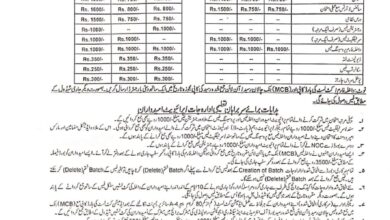Promotion Order: EST to SST Science

Promotion Order: EST to SST Science
Promotion Order: EST to SST Science
Understanding the intricacies of promotion order from Eastern Standard Time (EST) to Singapore Standard Time (SST) is crucial for professionals dealing with international collaborations, especially in the realm of science. The scientific community, which thrives on timely communication and coordination, often requires precise time zone conversions to ensure global participation and seamless project management. In this article, we delve into the comprehensive guide to EST to SST conversions, focusing on its implications in scientific contexts, providing step-by-step instructions, and highlighting best practices for managing these transitions effectively.
Understanding Time Zones: EST and SST
Table Of Contents
Eastern Standard Time (EST) is a time zone used in the eastern part of the United States and Canada. It is UTC -5 hours, meaning it is five hours behind Coordinated Universal Time (UTC). This time zone is commonly used during the winter months when daylight saving time is not in effect.
Singapore Standard Time (SST), on the other hand, is the time zone used in Singapore and is UTC +8 hours. Unlike EST, SST does not observe daylight saving time, making it a stable and consistent time zone throughout the year.
Why Time Zone Conversion Matters in Science
The field of science is inherently collaborative, often involving researchers and teams spread across multiple continents. Time zone differences can pose challenges, especially when scheduling meetings, coordinating experiments, or synchronizing data collection. Inaccurate time conversions can lead to missed deadlines, miscommunication, and delays in project timelines. Therefore, understanding how to efficiently convert EST to SST is essential for maintaining the momentum of scientific research and ensuring the accuracy of collaborative efforts.
Step-by-Step Guide to Converting EST to SST
Converting EST to SST involves adding 13 hours to the EST time. This seemingly simple process requires careful attention to detail to avoid errors, particularly when coordinating across days and considering the non-observance of daylight saving time in Singapore.
1. Basic Conversion Formula
The basic formula for converting EST to SST is as follows:
[ \text{SST} = \text{EST} + 13 \text{ hours} ]
For example, if a conference call is scheduled for 10:00 AM EST, it will be 11:00 PM SST on the same day.
2. Considering Daylight Saving Time
During daylight saving time, Eastern Daylight Time (EDT) replaces EST. EDT is UTC -4 hours, which means that during this period, you would need to add 12 hours instead of 13 to convert to SST. This adjustment is crucial for accurately scheduling meetings or deadlines during the daylight saving period.
3. Using Online Tools for Accuracy
While manual conversion is possible, using online tools and time zone converters can reduce the risk of human error. Websites such as Timeanddate.com or Worldtimebuddy.com offer reliable time zone conversion tools that allow users to input specific dates and times, accounting for daylight saving time and other variables.
Best Practices for Managing Time Zone Differences in Science
Time zone management is a critical skill for scientists working in global teams. Here are some best practices to ensure smooth coordination:
Shared calendars, such as Google Calendar, allow team members to see the availability of others in their local time zones. These tools automatically adjust for time zone differences, reducing the likelihood of scheduling conflicts.
2. Schedule Meetings at Optimal Times
When planning meetings across time zones, aim to schedule them at times that are reasonable for all participants. This may require some compromise, but it is essential for maintaining productivity and collaboration.
3. Communicate Clearly
When sending emails or scheduling meetings, always specify the time zone in question. For example, instead of saying “Let’s meet at 3:00 PM,” say “Let’s meet at 3:00 PM EST (4:00 AM SST).” This clarity helps prevent confusion and ensures that all parties are on the same page.
4. Be Mindful of Cultural Differences
Cultural differences can influence how time is perceived and managed. In some cultures, punctuality is strictly observed, while in others, there may be more flexibility. Understanding these differences can help in setting realistic expectations and fostering positive international collaborations.
The Impact of Time Zone Awareness on Scientific Progress
Time zone awareness is not just a logistical concern; it directly impacts the progress of scientific research. Delays in communication due to time zone misunderstandings can slow down projects and reduce the effectiveness of global teams. By mastering time zone conversions and adopting best practices for managing time differences, scientists can enhance their productivity and contribute to more efficient and successful research outcomes.

Leveraging Technology for Better Coordination
In addition to time zone conversion tools, other technologies such as project management software and virtual meeting platforms can greatly assist in managing international collaborations. Tools like Slack, Trello, and Zoom offer features that allow teams to collaborate in real-time, despite being in different time zones. These technologies help bridge the gap, ensuring that projects move forward smoothly regardless of geographical distance.
Conclusion: Mastering EST to SST Conversions for Scientific Excellence
Understanding and effectively managing time zone conversions from EST to SST is a crucial aspect of successful international scientific collaboration. By following the guidelines outlined in this article, researchers can ensure that their projects are not hindered by time zone challenges. Whether it’s using the correct conversion formula, leveraging technology, or practicing clear communication, these strategies will help scientists maintain the integrity and momentum of their research, ultimately leading to greater scientific discoveries and innovations.
Join Us On For Latest Updates For Click Here To Get All Latest Government Jobs And Education News : https://mediaandjobs.com/
You Can Join Our What’s app Group
https://chat.whatsapp.com/CVwROiD9kKSFwq6pnIdQxi
Click Here To Join Our Facebook Page To Get All Latest Government Jobs And Education News : https://www.facebook.com/profile.php?id=100085051735597&mibextid=ZbWKwL
Download And Get Here all Data Of Your Requirement in One File https://heylink.me/EarnWithSSS/



